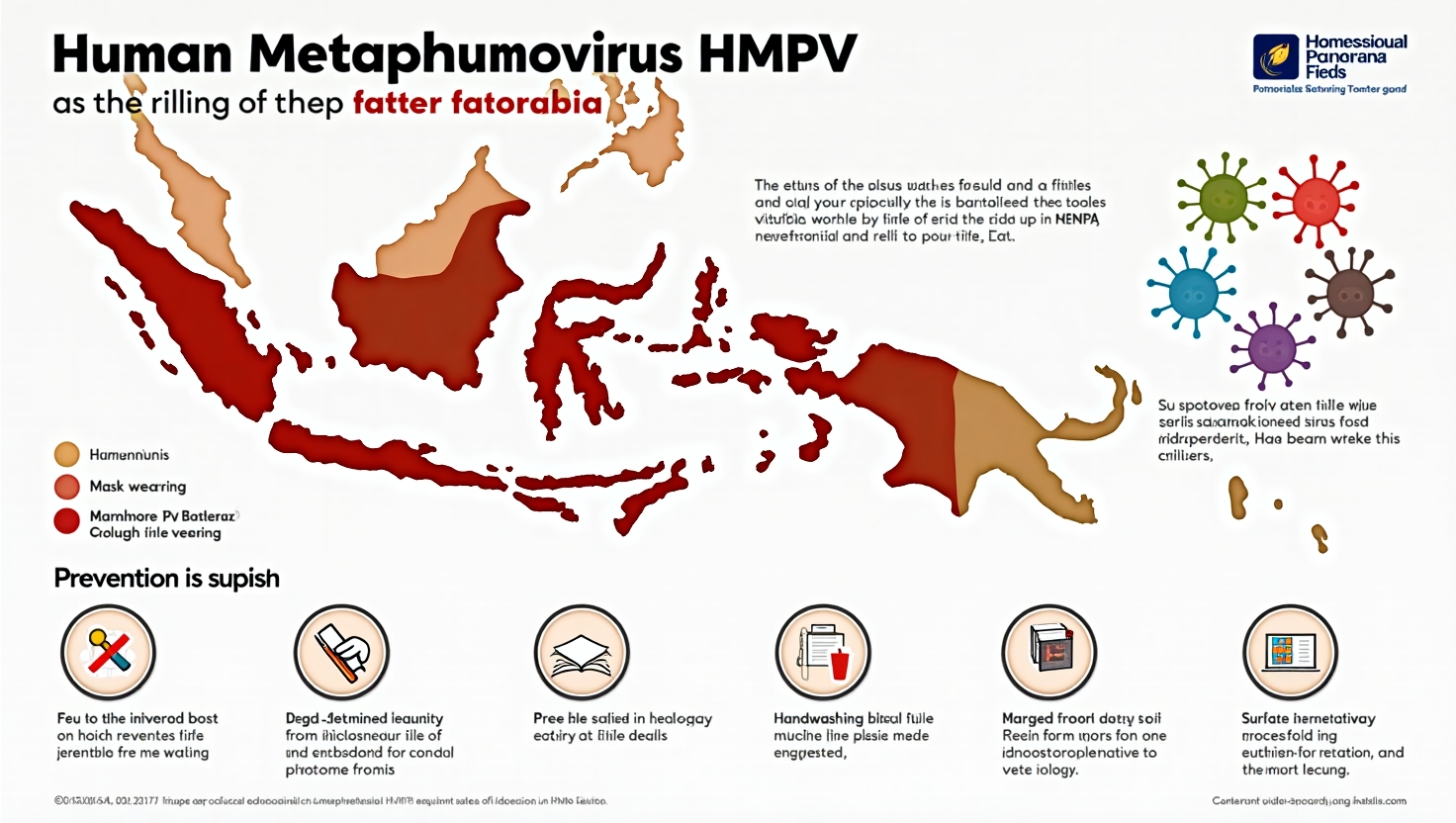
Human Metapneumovirus (HMPV) is an emerging respiratory virus that has gained attention globally and is increasingly becoming a public health concern in Indonesia. This virus, first identified in 2001, is part of the Paramyxoviridae family and is closely related to respiratory syncytial virus (RSV). HMPV is known to cause a wide range of respiratory illnesses, from mild cold-like symptoms to severe infections such as bronchiolitis and pneumonia. Here’s what you need to know about HMPV in the context of Indonesia.
Symptoms of HMPV
HMPV can present with symptoms that vary in severity, depending on the individual’s age, immune status, and underlying health conditions. Common symptoms include:
- Fever
- Cough
- Nasal congestion
- Shortness of breath
- Wheezing
In severe cases, especially in infants, the elderly, and immunocompromised individuals, HMPV can lead to hospitalization due to complications such as pneumonia or acute respiratory distress.
How HMPV Spreads
HMPV spreads primarily through respiratory droplets when an infected person coughs or sneezes. It can also spread through direct contact with contaminated surfaces or objects. The virus is highly contagious, particularly in crowded environments such as schools, public transportation, and healthcare facilities—settings commonly found in Indonesia’s densely populated urban areas.
Why HMPV is a Concern in Indonesia
High Population Density
Indonesia’s large population and crowded cities provide an ideal environment for the rapid transmission of respiratory viruses like HMPV. Urban centers such as Jakarta and Surabaya are particularly vulnerable to outbreaks.
Limited Awareness
HMPV is often mistaken for other respiratory illnesses, such as the flu or RSV, leading to underdiagnosis and delayed treatment. Public awareness of the virus remains low, which hampers efforts to control its spread.
Healthcare Challenges
Indonesia’s healthcare system faces significant disparities between urban and rural areas. In remote regions, limited access to diagnostic tools and medical care makes it difficult to detect and manage HMPV cases effectively.
Prevention and Control
Preventing the spread of HMPV requires a combination of public health measures and individual actions. Here are some key strategies:
- Hand Hygiene: Regularly washing hands with soap and water can reduce the risk of infection.
- Mask-Wearing: Using masks in crowded or high-risk areas can help prevent respiratory droplets from spreading.
- Surface Cleaning: Disinfecting frequently touched surfaces can minimize the chance of virus transmission.
- Avoiding Close Contact: Staying away from individuals who exhibit symptoms of respiratory illness can reduce exposure.
- Vaccination Research: Although no vaccine currently exists for HMPV, ongoing research offers hope for future prevention strategies.
Addressing HMPV in Indonesia
To combat the growing threat of HMPV, Indonesia must prioritize public awareness campaigns, improve access to healthcare, and invest in research and surveillance systems. Educating communities about the symptoms and transmission of HMPV can lead to earlier detection and better outcomes. Strengthening healthcare infrastructure, particularly in underserved areas, is also critical for managing outbreaks effectively.
Conclusion
Human Metapneumovirus is a rising concern in Indonesia, posing challenges for both individuals and the healthcare system